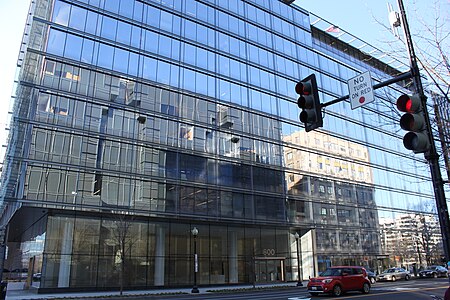PNC Bank Building (Washington, D.C.)
2010 establishments in Washington, D.C.Commons link is defined as the pagenameGensler buildingsOffice buildings completed in 2010Skyscraper office buildings in Washington, D.C. ... and 1 more
Washington, D.C., building and structure stubs

PNC Bank Building is a high-rise skyscraper building located at 800 17th Street NW, Washington, D.C., United States. The building broke ground in 2008, and was completed in 2010. The building serves as an office building for PNC Financial Services, and serves as the regional headquarters for PNC Financial Services. The building is 150 feet (46 m), containing 12 floors. The architect of the building is Gensler, who designed the postmodern design of the building. The developer of the building is PNC/Vornado.
Excerpt from the Wikipedia article PNC Bank Building (Washington, D.C.) (License: CC BY-SA 3.0, Authors, Images).PNC Bank Building (Washington, D.C.)
17th Street Northwest, Washington
Geographical coordinates (GPS) Address Nearby Places Show on map
Geographical coordinates (GPS)
| Latitude | Longitude |
|---|---|
| N 38.900611111111 ° | E -77.03975 ° |
Address
Holland and Knight
17th Street Northwest
20006 Washington
District of Columbia, United States
Open on Google Maps





